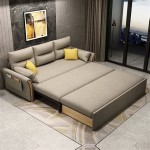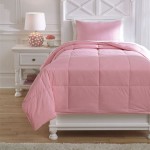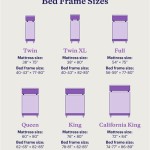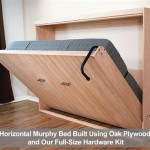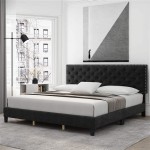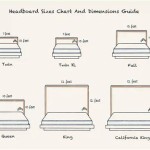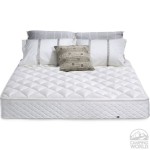What Size is a Trundle Bed? A Comprehensive Guide
A trundle bed is a practical and versatile piece of furniture designed to maximize space, especially in smaller homes or rooms. It essentially consists of a standard bed frame with a second, smaller bed frame stored underneath. The lower bed, often called the “trundle,” can be rolled out on casters when needed and tucked away when not in use. While the concept is straightforward, understanding the dimensions of a trundle bed can be crucial when selecting one for a specific space. This article will delve into the standard sizes of trundle beds, considering both the upper bed frame and the hidden trundle bed, and discuss factors that influence these dimensions.
The size of a trundle bed is not a single, fixed measurement. Instead, it involves understanding the dimensions of both the main bed frame and the trundle bed that slides underneath. The upper bed typically follows standard mattress sizes, while the trundle bed must be small enough to fit comfortably beneath it. This difference in size is essential for the functionality of the trundle bed design.
Common Mattress Sizes for Trundle Beds
The top bed of a trundle bed set often adheres to standard mattress sizes, allowing for easy selection of bedding and comfort customization. The most common sizes are twin, full, and occasionally, queen. Each of these sizes has specific dimensions that directly impact the overall footprint of the trundle bed frame. Understanding these dimensions is crucial for ensuring the bed fits within the designated space and that the trundle bed beneath can be easily deployed.
Twin Size: A twin-size mattress is the most common choice for trundle beds, particularly in children's rooms or guest rooms. A standard twin mattress measures approximately 38 inches wide and 75 inches long. The bed frame itself will typically add a few inches to these dimensions, resulting in an overall footprint of approximately 40-42 inches wide and 77-79 inches long. Twin-size trundle beds are ideal for single sleepers and are well-suited for smaller rooms where space is at a premium.
Full Size: A full-size mattress, also known as a double mattress, offers more sleeping space than a twin. A standard full mattress measures approximately 54 inches wide and 75 inches long. The bed frame will again add a few inches, making the overall dimensions around 56-58 inches wide and 77-79 inches long. Full-size trundle beds are a good option for teenagers or adults who prefer a bit more room to stretch out. However, they require a larger room compared to twin-size trundle beds.
Queen Size: While less common, queen-size trundle beds are available. A standard queen mattress measures approximately 60 inches wide and 80 inches long. The bed frame increases the footprint to around 62-64 inches wide and 82-84 inches long. Queen-size trundle beds provide ample sleeping space for couples or individuals who desire maximum comfort. Due to their larger size, they are most appropriate for spacious rooms or master suites.
Trundle Bed Dimensions and Considerations
The trundle bed itself is designed to be smaller than the main bed frame, allowing it to be stored neatly underneath. The exact dimensions of the trundle bed are determined by the size of the mattress it is intended to hold and the clearance required for smooth operation. Several factors influence the dimensions of the trundle, including the height of the main bed frame, the type of casters used, and any structural supports within the frame.
Trundle Mattress Size: The mattress used in the trundle bed is typically thinner than the mattress used on the main bed frame. This is necessary to ensure the trundle bed can slide freely under the main bed without obstruction. The most common mattress thickness for a trundle bed is between 5 and 8 inches. The length and width of the trundle mattress are generally the same as or slightly smaller than the corresponding size of the main bed. For instance, a twin-size trundle bed will typically accommodate a twin-size mattress, but the mattress may be a few inches shorter in length and narrower in width to ensure a comfortable fit. The trundle mattress for a full-size main bed will also typically be a full-size, but with similar adjustments in thickness and potentially slight reductions in other dimensions.
Trundle Bed Frame Dimensions: The trundle bed frame must be strategically designed to fit under the main bed while allowing for easy roll-out. The height of the trundle bed frame is the most critical dimension. It must be low enough to clear the bottom of the main bed frame, including any slats or support structures. The width and length of the trundle bed frame are typically a few inches smaller than the corresponding dimensions of the trundle mattress to provide enough clearance for the frame to move freely. The overall height of the trundle frame, including the casters, is a key consideration. Low-profile casters can help to minimize the overall height and maximize clearance.
Height Considerations: The height of the main bed frame plays a significant role in determining the maximum height of the trundle bed. A higher main bed frame allows for a taller trundle bed frame and a thicker trundle mattress. However, a lower main bed frame necessitates a thinner trundle mattress and a lower-profile trundle bed frame. The distance between the floor and the bottom of the main bed frame must be carefully measured to ensure that the trundle bed can be easily rolled in and out without scraping or getting stuck. It's also important to consider the thickness of any bedding or mattress toppers used on the trundle bed, as these can add to the overall height and potentially interfere with the trundle's operation.
Factors Influencing Trundle Bed Dimensions
Beyond the standard mattress sizes, several other factors can influence the overall dimensions of a trundle bed. These factors include the design of the bed frame, the materials used in its construction, and any additional features incorporated into the trundle mechanism. Understanding these factors can help individuals make informed decisions when selecting a trundle bed that meets their specific needs and space constraints.
Bed Frame Design: The design of the main bed frame can significantly impact the available space for the trundle bed. Some bed frames feature solid side rails that extend down to the floor, which can restrict the height of the trundle bed. Other bed frames have higher legs or open side rails, providing more clearance for the trundle bed. Platform beds, in particular, often have limited clearance, requiring a very low-profile trundle bed. Conversely, beds with higher headboards and footboards may offer more vertical space for the trundle bed, allowing for a thicker trundle mattress.
Material and Construction: The materials used in the construction of the bed frame can also influence its overall dimensions. Solid wood frames tend to be more substantial and may require thicker side rails and support structures, potentially reducing the available space for the trundle bed. Metal frames, on the other hand, can be designed with thinner profiles, maximizing clearance. The construction method also plays a role. Some bed frames are designed with integrated trundle mechanisms that optimize space utilization. Others may rely on separate trundle bed frames that simply roll underneath, which may require more clearance.
Additional Features: Some trundle beds incorporate additional features that can affect their dimensions. For example, some trundle beds have pop-up mechanisms that allow the trundle bed to be raised to the same height as the main bed, creating a larger sleeping surface. These pop-up trundle beds typically require more vertical space than standard trundle beds. Similarly, some trundle beds are designed with drawers or storage compartments integrated into the trundle frame, which can impact the overall height and depth of the trundle unit. When selecting a trundle bed, it's important to consider these additional features and how they may affect the bed's dimensions and functionality.
When considering the dimensions of a trundle bed, it's crucial to account for the space required to maneuver the trundle bed in and out. The area in front of the bed should be clear of obstructions to allow for easy access. The height of the trundle bed when rolled out should also be considered, especially if there are low-hanging fixtures or furniture nearby. By carefully evaluating these factors, individuals can ensure that the trundle bed fits comfortably within their space and provides a convenient and functional sleeping solution.

Paproos Twin Bed With Trundle Solid Wood Platform Frame House Shaped Headboard And Guardrails No Box Spring Needed Modern Size

Twin Size Daybed With Trundle Storage Cabinets And Usb Ports White Bed

Armania Solid Sheesham Wood Single Trundle Bed With Storage Ganpati Arts

Twin Size Platform Bed With Trundle White Aosom Com

Trundle Bed

What Is A Trundle Bed Dreamcloud

Trundle Bed Guide What Is A Living Spaces

Bo Full Size Trundle Bed Bookcase Headboard Custom Kids Furniture

Aukfa Upholstered Full Size Daybed With Extra Twin Trundle Bed Linen Fabric Sofa Frame Pink

Diy Rolling Trundle Bed Plans Infarrantly Creative

